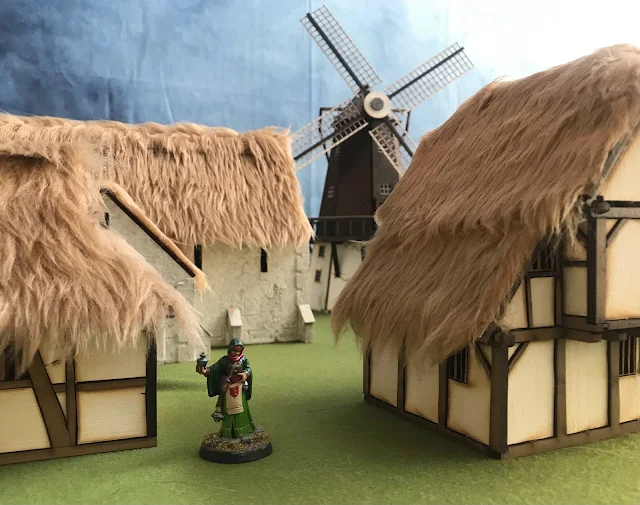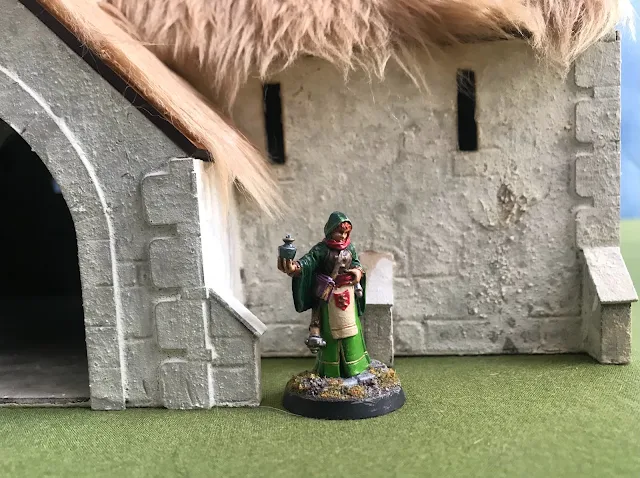Are you interested in having a full tables worth of terrain for your wargames? Does the cost of Games Workshop plastic make you consider otherwise? In this post I'll guide you through the in and outs of using MDF terrain for your fantasy tabletop games.
What is MDF terrain?
For those who may be new to the hobby, let’s start with the basics. MDF stands for medium density fiber, and it is essentially a material made of fine bits of wood smooshed together. It's nowhere near as course as plywood, and is stronger than balsa wood. Since it's a composite wood, it's cheaper and readily available as a construction material.
What makes it great for the hobby is that, with a thin enough sheet, the material is easily cut with a laser. This allows for easy to build kits to be created easily and repeatably, meaning cheap terrain. It also takes paint well since it's wood, so some kits can even come pre-painted.
MDF kits can range from very simple, blocky shapes to very advanced curves and textures. Of course the level of difficulty and price goes up as the complexity does, so keep that in mind when you’re purchasing a kit.
How do you use MDF terrain?
This terrain can be used in a variety of functions, from ruins to line of sight blocking buildings. Sometimes, they even come with detailed interiors for RPG players who may want to pop in and out of buildings. Other times it can even be used to make useful scatter terrain like pillars or carts to strew about your battlefields. The use of these terrain pieces are only limited by your imagination and the style of board you’re looking for.
The actual construction varies with each manufacturer. Most kits you'll get will be unassembled on "sprues"; the individual boards that were laser cut, but not completely so that pieces stay organized and won't get lost. They are easy to punch out with your fingers, but an x-acto knife is handy to cut any stubborn bits stuck to the sprue. You then glue together the parts, with either a wood glue or super glue, and then paint as desired. You don't need much in the way of tools, as I've been able to use just my hands and glue before. If you struggle to hold onto things, rubber bands or clamps can be helpful.
Painting can also be an issue with MDF. Since it's wood, it's porous and absorbs paint, which makes painting with a brush a pain. Instead, I would recommend using a spray paint to do the basecoat, otherwise you'll waste a lot of time. I personally buy pre-painted kits, but that raises the price.
Cons of MDF Terrain
Now that all sounds great, but MDF terrain suffers from a lack of texture. Yes, it’s cheap and easy to build, but you’re buying flat panels of wood. Some companies alleviate this by burning texture onto the MDF, but it still looks flat and unrealistic. Coupled with this, the flat panel nature leads to blocky designs, and it’s difficult to implement curvature into the model.
All of this culminates in a flat, almost 2D look, which can be at odds with highly detailed miniatures. You can do some work to add detail and texture, but now you're putting in a lot of extra work for something that was supposed to save you time. Ironically, this works really great for Sci-Fi wargames, especially if you want a pre-fabricated look to all of your terrain. But, seeing as this is a fantasy blog, I chalk that up as a con.
Another issue I have is scale. I notice a lot of MDF terrain gets created for historical wargaming, which typically is at a 28 mm scale. Most fantasy on the other hand, works at a 32 mm scale. This isn't MDF terrain's fault, just something to keep an eye on if you're looking to purchase. I once bought a whole bundle that was comically small, even for 28 mm.
Pros of MDF Terrain
With all of the negatives out of the way, let's talk about the good stuff. Number one, of course, is the cost and ease of construction. I've been able to build a whole tables worth of terrain for about $100. Forget about doing that with GW plastics, or most plastic terrain. I can also knock that out in one afternoon, and if it comes prepainted I save even more time.
In a similar vein are papercraft buildings, which I really like, but they lack durability and weight. MDF solves that problem, and it's much harder to knock around or break. Of course, I don't recommend dropping them off the table, as they would still break apart.
MDF terrain is also easily modifiable. There are plenty of tutorials online, like this excellent one from Black Magic Craft, that show how far you can stretch this. Some of my favorite kits use teddy bear fur as thatching on the roofs to great effect, and is a relatively simple conversion.
This final one is completely unrelated to gaming, but I do like the smell of the burnt wood as I'm constructing a kit.
My Recommendations
Unfortunately, my favorite MDF terrain manufacturer, 4Ground, is now closed for ordering. But, if you can find any of their kits floating around, I would highly recommend picking them up. Almost all of the kits pictured are from them. Some replacements though:
Etsy: You can find whole terrain sets on here. I caution the scale though, as this is where I ran into that issue. Just look up MDF fantasy terrain.
Black Site Studios: Very nice pre-painted kits designed to work with their 32 mm fantasy skirmish game.
I Built It: For the very, very high end of MDF terrain. Excellent kits with superb texture. You pay for it though.
Conclusion
MDF terrain is an excellent investment for your tabletop wargaming needs. I would recommend it to most everyone, and it's easy enough to work with so even beginners shouldn't have a tough time.
-The Space Dinosaur












No comments:
Post a Comment